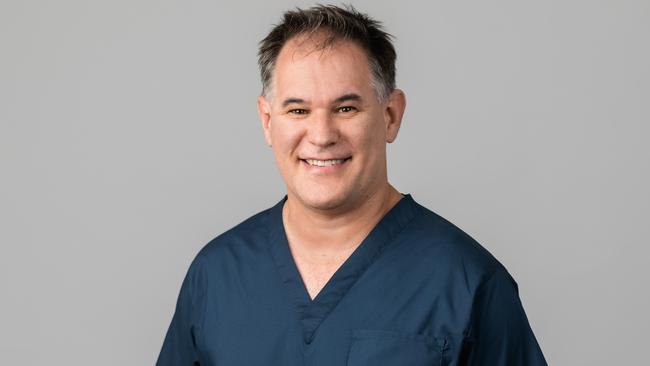Vasectomies soaring, tube tying falling, Medicare data reveals
Men are queuing up for the snip more than ever, an Adelaide doctor says, as a small change to the procedure makes a big difference to one women’s health stat.
Lifestyle
Don't miss out on the headlines from Lifestyle. Followed categories will be added to My News.
Vasectomies soared by 75 per cent in the past decade to hit 38,875 last financial year while women having their tubes tied plummeted by 50 per cent to 5462, national Medicare data reveals.
The combined South Australia and Northern Territory figures lagged a little behind the national average with the number of vasectomies rising 55 per cent, from 1491 in 2013-14 to 2312 in 2022-23, while tubal ligation fell 38 per cent from 669 to 413.
Vasectomies now outnumber tubal ligations by more than seven to one, whereas ten years ago it was only two to one.
EMILY OLLE: ‘Crazy’ truth about the pill is terrifying

Vasectomy expert Dr Geoff Cashion, who founded Vasectomy Australia, which includes clinic in Adelaide and does about 70 procedures a week, says increased awareness and advances in medical technology are behind the trend.
“Responsibility for birth control has long fallen disproportionately on the female partner,” he said.
“Vasectomy has the highest success rate of all forms of contraception, and a very low rate of complications. With the modern ‘no scalpel’ technique, vasectomy is now a very simple procedure, performed under local anaesthetic with minimal pain.
“The whole procedure takes around 10 minutes and you can drive home afterwards.
“Tubal ligation, on the other hand, is more invasive, carries a higher risk of complications and is much harder to reverse. And unlike temporary forms of female contraception, such as the pill and IUDs, a vasectomy has no hormonal side effects.”
Dr Cashion noted a vasectomy allows the female partner to get off all forms of contraception, without having any impact on the male partner’s testosterone levels, sex drive or ability to get an erection.
He said contraception is a gender equality issue, and across the world, higher vasectomy rates correlate with greater gender equity and higher socio-economic development.
November is World Vasectomy Month, and in the lead up to the 24-hour “global celebration” on November 16th-17th, Dr Cashion is urging policymakers to support men who want to have one.
“The Medicare rebate for the vasectomy procedure is $214, which means there’s an out of pocket expense of $550,” he said.
“I believe the government should consider increasing the rebate to encourage more men to have vasectomies. As well as promoting gender equity, vasectomies also make economic sense because they save couples from the ongoing costs of female contraception – and the government from the cost of subsidising it.”
Steven Tait, 47, decided to have the procedure after he and wife Beth had two children.
“There comes a time in your life when you recognise you don’t want a situation you may regret later,” he said.
“We looked at alternatives, Beth was very supportive, and it was quick and easy.”
How scalpel-free vasectomies are done:
A local anaesthetic is injected into the area using a fine needle, and a tiny hole is made in the scrotum.
The vas deferens is divided and the testicular end of the tube is left open – this helps prevent congestion in the testis and reduces the risk of pain or post vasectomy syndrome.
A tiny layer of tissue is placed between the two ends of the vas to stop them rejoining.
The same procedure is performed on the other side but through the same hole.
The skin edge is clipped together without stitches and dressing is applied
More Coverage
Originally published as Vasectomies soaring, tube tying falling, Medicare data reveals





